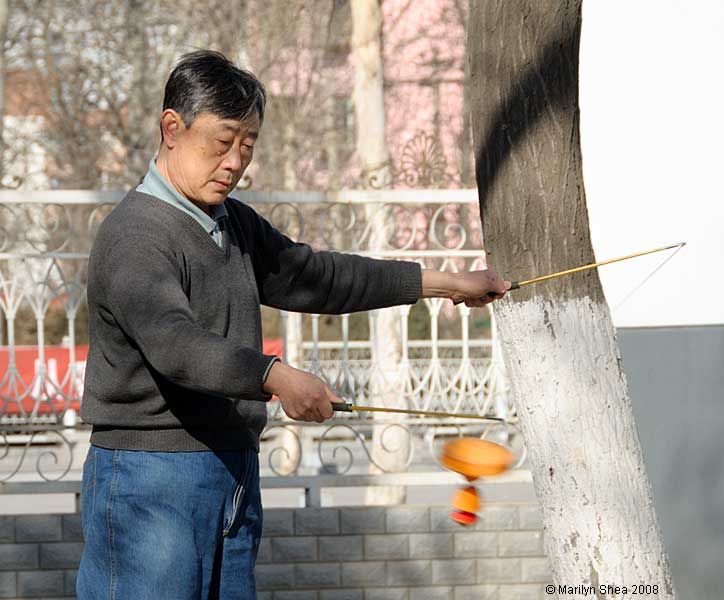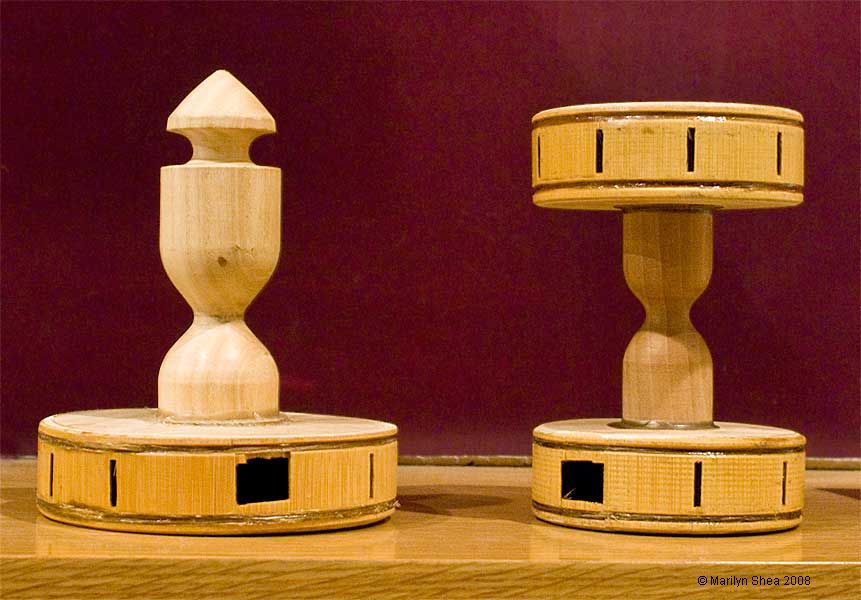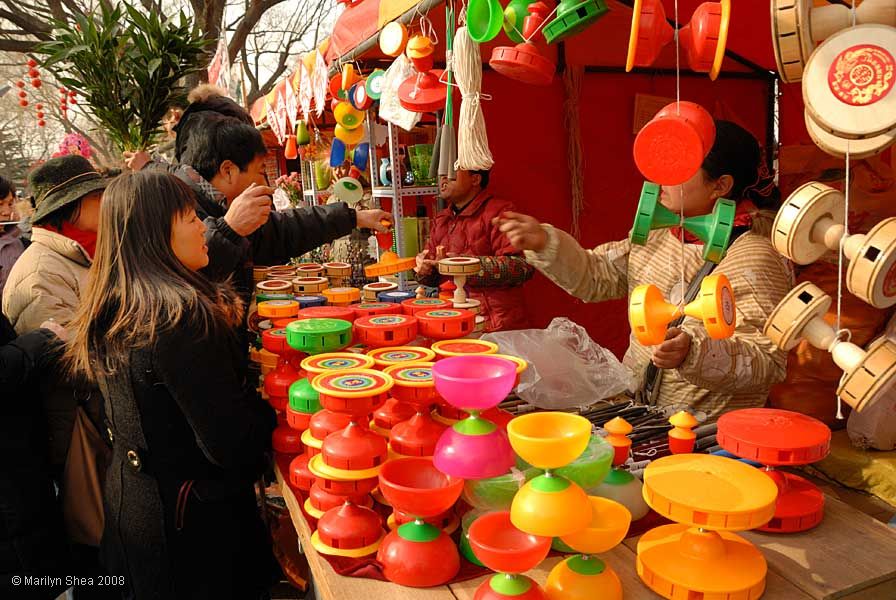 |
| One of the popular sports in China is playing with the Chinese yo-yo 抖空竹 dǒukōngzhú. The basic yo-yo is shaped like two disks connected by an axle and is spun by a string wound around its center and by pushing and pulling on the string by moving two sticks. OK, look at the picture. The player moves his hands back and forth or up and down in opposition, this creates a spring-like tension on the yo-yo and it spins.
It may confuse you to remember that I said two disks connected by an axle. In the picture above, the player is using a one-sided yo-yo. This is much more challenging, but allows certain moves that are impossible with the two sided yo-yo. In the picture below, there are examples of the original style of Chinese yo-yo made of bamboo. The one on the right is a two sided yo-yo and the one on the left is one sided. The most common Chinese name for the yo-yo is 空竹 (kōngzhú) which means hollow bamboo and is derived from this style of yo-yo. There are many names for the yo-yo, partly because it has been around so long, and partly because it is very popular and has many regional nicknames. It can also be called 空钟 ( kōngzhōng) or hollow bell. You can see that the single sided type looks like a bell, but the name could also come from the fact that when the yo-yo is spun it makes a whistling sound. Two other names derive from the ability to make a sound. Xianghuang 响簧 (xiǎnghuáng) means "make the sound of the woodwind" referring to the reed in certain instruments. Cheling 扯铃 (chělíng) means "pull bell." When the yo-yo went to Europe with the traders after 17th century, it got new names. Devil on two sticks must describe the difficulty of learning the skill. It became enormously popular among both adults and children. It was introduced to the circus where jugglers developed elaborate tricks and feats of skill. When, in 1906, Gustav Philippart patented significant design changes to the Chinese yo-yo, he called it a diabolo. His had open cups at either end and was made of tire rubber. It would be incorrect to call the kongzhu or Chinese yo-yo a diabolo, that name should apply to Philippart's invention, but many sources do refer to it as a diabolo. The diabolo's design is significantly different, although it is still played with two sticks and a string. Interestingly, Philippart's version has also been adopted by the Chinese as one of several versions they use. |
 |
| Below, you can see the traditional bamboo kongzhu on the right. On the table, in the foreground, the open cupped type is the French diabolo and in the background there are several plastic versions of the traditional kongzhu. Most people prefer the plastic versions because they spin faster, don't break, and aren't bothered by a little rain. In the pictures that follow, all of the kongzhu yo-yos are the plastic type. They are all a little different and it is easier to perform some tricks with one, and other tricks with another. |
 |
http://hua.umf.maine.edu/China/beijing4.html
Last
update: July 2009
© Marilyn Shea, 2009